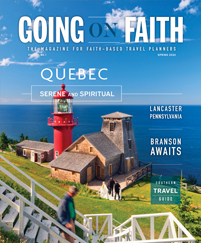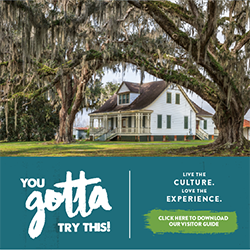Travel to Maryland’s Eastern Shore — the narrow portion of the state that sits across the Chesapeake Bay from the mainland — and you might expect to enjoy a lot of crabcakes and maritime culture. But you’ll also discover the story of one of America’s most inspiring heroes: Harriet Tubman.
Tubman was born into slavery on a plantation on the Eastern Shore in the 1820s. In adulthood, she escaped to freedom, then made numerous trips back to Maryland to help friends and family members escape slavery on the Underground Railroad. Today, visitors to the Eastern Shore can learn about Tubman’s life and legacy at several area attractions.
“The Harriet Tubman Underground Railroad Visitor Center would really resonate well with church groups,” said Rich Gilbert, travel trade sales manager for the Maryland Office of Tourism. “She had four pillars in her life: faith, family, freedom and community. She was all about her faith. And the visitor center does a really good job of interpreting that.”
The visitor center is at the Harriet Tubman Underground Railroad National Historical Park in Dorchester County. The park preserves the home where Tubman was born and parts of the plantation where she was enslaved. In addition to the educational visitor center, groups will find a museum store, a research library and seasonal interpretation to tell them more about Tubman’s remarkable story.
The park is one of several stops on the Harriet Tubman Byway. Groups can spend an entire day exploring other Tubman sites on the Eastern Shore. Among the most significant is Bucktown Village Store.
“That’s where she was hit in the head with an iron when she was young,” Gilbert said. “That contributed to her having visions, which really contributed to her faith and strength years later.”
Groups also stop at Linchester Mill in Preston. The mill was run by Quakers during Tubman’s day and was a frequent stop for her and other slaves traveling the Underground Railroad.
In addition to discovering Harriet Tubman’s story on the shore, groups should take some time to appreciate the area’s natural beauty and nautical traditions. Here are four other activities to include on your itinerary.
Madhouse oysters
Fishing Creek
The Chesapeake Bay is known for its Chesapeake Gold Oysters, and oyster harvesting has been an important part of the local economy for a long time. Today, oysters are raised at special aquaculture farms in the bay, and travelers in the area can learn about the history and methods of oyster harvesting by visiting local businesses such as Madhouse Oysters.
Madhouse Oysters is a full aquaculture operation, and groups can see its work up close by taking an excursion on one of the oyster boats. They’ll learn about the oyster’s journey from larvae to market and get to know some of the employees who harvest and process the seafood.
Chesapeake Bay Environmental Center
Grasonville
No matter where you go on the Eastern Shore, you’re not far from water. The Chesapeake Bay is the natural wonder of this region, and groups can learn about the bay and many of the creatures that live there by visiting the Chesapeake Bay Environmental Center, along the Kent Narrows Waterway in Grasonville.
Guides at the center offer a variety of nature programs that include tours with experts in ornithology, native plants, water ecology and nature conservation. A birds-of-prey program features encounters with various species of raptors and other birds native to the area. Another program, Remarkable Oyster, teaches participants about the life cycles of oysters that predominate in the bay.









